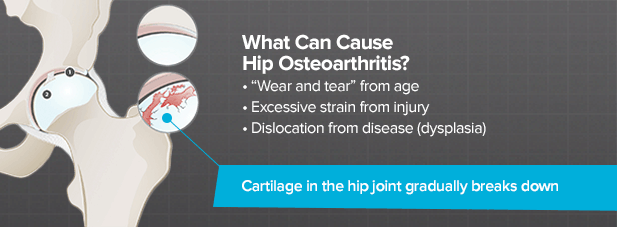
One of the most common hip disorders is osteoarthritis (OA), also known as degenerative joint disease, in which the joint’s cartilage is damaged due to wear or injury, causing severe pain and limiting mobility.
In a healthy hip joint, the surfaces of the femoral (thighbone) head and the hip socket (acetabulum) are smooth and covered by a layer of articular cartilage. In an arthritic hip joint, the smooth surface of the cartilage in both parts of the joint is gradually worn down as a result of age, weight, disease or injury.
Osteoarthritis develops when, through excessive strain, tears appear in the surface of the cartilage. This protective layer becomes rough and the surfaces of the hip joint can no longer slide smoothly; the arthritic joint starts to grind, causing the surfaces of the bones to rub directly against each other. The deteriorated cartilage loses its elasticity and painful impact is passed on directly to the bone below.
Risk factors that may contribute to OA:
Learn basics of hip anatomy »
Explore potential treatment options for osteoarthritis of the hip »